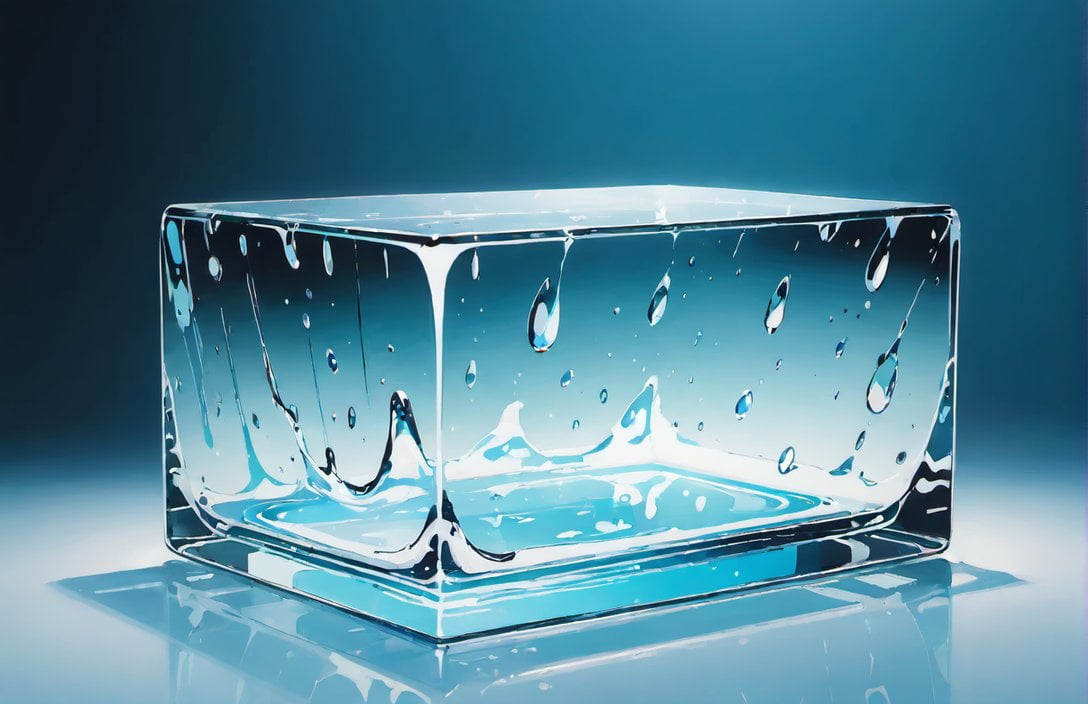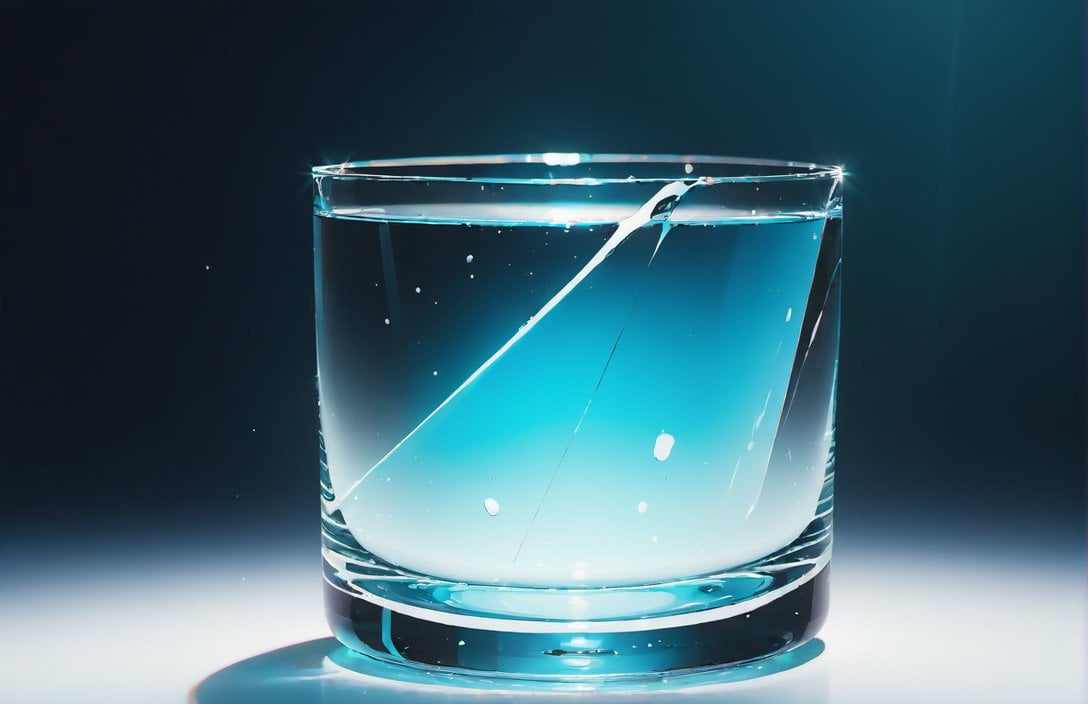Glass is a marvelously intriguing material that has captivated the human imagination for centuries. In this article, we will delve into the fascinating world of glass, uncovering its mysteries and exploring its wide-ranging applications. From its mesmerizing manufacturing processes to its historical significance, we will unravel an array of captivating facts about glass that will leave you with a newfound appreciation for this versatile substance. Join us as we embark on a journey to discover the wonders of glass and the many ways it touches our lives.

Key Takeaways:
- Glass is made from sand, soda ash, and limestone through a melting process.
- Glass is classified as an amorphous solid, with a disordered atomic structure.
- Soda-lime glass, commonly used in windows and bottles, can break into sharp shards.
- Tempered glass is strengthened through heating and cooling, making it difficult to cut.
- Glass is an insulator and doesn’t conduct electricity.
- Glass can be microwaved and is a safe choice for heating food.
- Glass containers are healthier than plastic ones as they don’t release harmful chemicals.
- Glass is often used in skyscrapers due to its transparency, strength, and durability.
- Adding minerals to glass during manufacturing creates glass in different colors.
- Cracks in glass propagate rapidly, moving at 3000 mph.
- Glass windows were invented in the 17th century, replacing materials like animal horn and wood.
- The “Portland Vase” is a valuable glass art piece.
These facts showcase the scientific and historical aspects of glass, highlighting its origins, applications, and unique properties. To learn more about glass, visit these sources: The Fact Site – 15 Smashing Facts About Glass and Britannica – Glass | Definition, Composition, Material, Types, & Facts.
Facts About Glass: Unraveling Its Mysteries and Applications
Glass is an extraordinary material that has fascinated humans for centuries. From its origins as humble sand to its modern-day applications in various industries, glass continues to capture our imagination. In this article, we will delve into some fascinating facts about glass, exploring its unique properties and shedding light on its historical significance. So, let’s embark on this captivating journey of discovery!
Glassmaking: From Sand to Marvel
Glass is made primarily from sand, soda ash, and limestone. Through a process known as glassmaking, these raw materials are melted together at high temperatures to form the transparent substance we know as glass[^1^][^2^]. This intricate process involves carefully controlling factors such as temperature and composition to achieve the desired properties of the final product.
The Amorphous Solid: Neither Liquid Nor Solid
Contrary to popular belief, glass is neither a liquid nor a solid. It falls under the category of amorphous solids, meaning it has a disordered atomic arrangement[^1^]. Unlike crystalline solids with a well-defined repeating pattern, the atomic structure of glass is more random and lacks long-range order. This unique characteristic gives glass its distinctive properties, such as transparency and malleability.
The Dangers of Soda-Lime Glass
While glass is a versatile material, it’s important to note that not all types of glass are created equal. The most common type of glass, known as soda-lime glass, is widely used in windows and bottles. However, it can be dangerous if mishandled or broken, as it tends to shatter into sharp shards[^1^]. So, it’s always wise to exercise caution when handling objects made of soda-lime glass.
The Strength of Tempered Glass
On the other hand, tempered glass, often used in the manufacturing of car windows and smartphone screens, exhibits exceptional strength. This type of glass undergoes a controlled heating and cooling process that enhances its durability and resistance to breaking. It’s so strong that it’s difficult to cut and is commonly referred to as safety glass[^1^].
An Insulating Wonder
One of the remarkable properties of glass is its insulating nature. Unlike metals, glass does not conduct electricity, making it an excellent choice for electrical insulators[^1^]. This property enables its safe use in various electrical and electronic applications where the risk of electrical shocks needs to be minimized.
Microwavable Convenience
Have you ever wondered why your glassware is microwave-safe? Unlike metals, glass is microwavable, which means you can safely heat your food in glass containers. Its ability to withstand the microwave’s energy without compromising its structure makes it a convenient and popular choice for heating food[^1^].
Healthier Storage Option
If you’re concerned about the potential health risks associated with plastic containers, glass provides a safer alternative. Unlike plastic, glass does not leach harmful chemicals into food or drinks, ensuring that your stored items remain free from contamination[^1^]. So, consider switching to glass containers for a healthier and more eco-friendly storage option.
Glass in Skyscrapers: Strength Meets Beauty
The strength and versatility of glass have long made it a favored material for constructing skyscrapers. Its transparency allows natural light to flood into buildings and provides stunning views of the surrounding cityscape. Moreover, glass’s resistance to weathering and its structural integrity make it an ideal choice for withstanding the elements and supporting the immense weight of towering structures[^1^].
Adding Color: The Artistry of Glass
Glass’s aesthetic possibilities are further enhanced by the addition of various minerals during the manufacturing process. By incorporating minerals like iron, cobalt, or copper, glass can be transformed into a multitude of vibrant colors, offering endless design possibilities for artistic creations and decorative pieces[^1^][^2^].
The Speed of Breaking Glass
When glass breaks, it does so with extraordinary speed. The cracks that propagate through shattered glass can move at speeds of up to 3,000 miles per hour[^1^]. This rapid propagation is attributed to the release of stored energy within the glass, causing the cracks to spread quickly and unpredictably.
A Window into the Past
Before the invention of glass windows in the 17th century, people had to rely on alternative materials such as animal horn, wood, parchment, or even paper to let in light. The introduction of glass windows revolutionized the way we experience our surroundings, allowing us to see out clearly while protecting us from the elements[^1^].
Priceless Glass Art: The “Portland Vase”
Among the most valuable glass art pieces in the world is the “Portland Vase.” This exquisite Roman cameo glass vessel dates back to the first century AD and is renowned for its intricate design and craftsmanship. It serves as a testament to the enduring beauty and fascination that glass continues to inspire throughout history[^1^].
These captivating facts about glass have only scratched the surface of this extraordinary material. From its humble beginnings as sand to its versatile applications in skyscrapers, artwork, and everyday objects, glass holds a special place in our lives. If you’re eager to learn more about the mysteries and wonders of glass, be sure to check out the links provided below for further exploration.
References:
- The Fact Site – 15 Smashing Facts About Glass
- Britannica – Glass | Definition, Composition, Material, Types, & Facts
If you’re curious about fascinating facts related to curly hair, check out our page on curly hair facts. You won’t believe what you’ll discover!
Discover intriguing insights into the life of Zora Neale Hurston by exploring our collection of fun facts about Zora Neale Hurston. Prepare to be amazed!
Are you a burger lover? Uncover some mind-blowing facts about burgers that will leave you hungry for more information. Dive into the juicy details now!
Different types and uses of glass
Glass is a fascinating material that is widely used in various applications due to its versatility and unique properties. From windows and doors to solar panels and bulletproof glass, there are different types of glass that serve specific purposes. Let’s dive into the world of glass and explore its various types and uses.
Float glass
One of the most common types of glass is float glass, also known as soda-lime glass. It is made from sodium silicate and calcium silicate, and it has a smooth surface and excellent clarity. Float glass is typically used for windows, doors, and other architectural applications[^1^].
Shatterproof glass
When safety is a top priority, shatterproof glass is the ideal choice. This type of glass is designed to minimize the risk of injury by not breaking into sharp pieces when shattered. It is commonly used for skylights, floors, and other applications where safety is a concern[^1^].
Laminated glass
Laminated glass is created by sandwiching multiple layers of ordinary glass with a layer of plastic in between. This construction gives it enhanced strength and safety properties. Laminated glass is often used for windshields, bulletproof glass, and other applications where durability and protection are important[^1^].
Extra clean glass
If cleanliness is a key requirement, extra clean glass, also known as self-cleaning glass, is the way to go. It has a special coating that repels water and dirt, making it easier to maintain a clean appearance. Extra clean glass is commonly used for facades, solar panels, and other applications where cleanliness is important[^1^].
Chromatic glass
For applications where light control is desired, chromatic glass is an excellent choice. This type of glass changes its transparency or color based on light or heat. It is commonly used for windows, skylights, and other architectural features that require adjustable light levels[^1^].
Tinted glass
Tinted glass is perfect for applications that require heat and glare reduction. It has a color or coating that helps reduce the amount of heat and glare that enters a space. This type of glass is commonly used for windows, doors, and other areas where sun protection is desired[^1^].
Toughened glass
When it comes to strength and durability, toughened glass is the go-to option. Also known as tempered glass, it is heated and rapidly cooled during the manufacturing process, which increases its strength. Toughened glass is commonly used for shower doors, table tops, and other applications where safety and durability are important[^1^].
Glass blocks
Glass blocks, shaped into blocks or bricks, are a unique type of glass that finds its application in architectural designs. They are commonly used for partitions, walls, and other decorative elements to allow natural light to pass through while maintaining privacy[^1^].
These are just a few examples of the many types of glass and their uses. Depending on the specific requirements of a project, different types of glass can be selected to maximize functionality and aesthetic appeal.
To learn more about the types and properties of glass, you can visit the following sources:
– The Constructor
– India Study Channel
Key Takeaways:
- Float glass, shatterproof glass, laminated glass, extra clean glass, chromatic glass, tinted glass, toughened glass, and glass blocks are some of the common types of glass.
- Each type of glass has its own unique properties and is used in specific applications.
- Float glass is often used for windows and doors in architectural projects.
- Shatterproof glass is designed to minimize the risk of injury by not breaking into sharp pieces.
- Laminated glass provides enhanced strength and is used for windshields and bulletproof glass.
- Extra clean glass has a special coating that repels water and dirt, making it easier to clean.
- Chromatic glass changes its transparency or color based on light or heat.
- Tinted glass reduces heat and glare, making it ideal for windows and doors.
- Toughened glass is heated and cooled rapidly to increase its strength, commonly used for safety applications.
- Glass blocks are shaped into bricks or blocks and used for architectural partitions and walls.
The environmental impact of glass
Glass, with its dazzling beauty and versatility, has captivated mankind for centuries. But have you ever wondered about the environmental impact of this mesmerizing material? Let’s delve into the fascinating world of glass and explore its effects on our planet.
The Hidden Costs of Glass Production
Glass production, while visually stunning, comes at a price. The manufacturing process releases carbon dioxide and nitrogen oxides, contributing to climate change and the formation of smog^1^. Additionally, the discharge of wastewater and chemicals can lead to water pollution, posing a threat to aquatic ecosystems^1^.
But it doesn’t end there. The very foundation of glass relies on non-renewable resources such as sand, limestone, and soda ash. The extraction of these materials from the Earth’s crust not only depletes natural reserves but also disrupts biodiversity^1^.
Moreover, glass production demands an enormous amount of energy. Heating raw materials to a staggering 1,500 °C requires substantial energy inputs, predominantly from fossil fuels like natural gas^1^. This reliance on non-renewable energy sources intensifies the carbon footprint of glass manufacturing.
Towards Sustainable Glass Manufacturing
Recognizing the environmental impacts of glass production, the industry has turned its attention towards sustainability. Let’s explore some key initiatives that aim to mitigate these issues:
- Reducing Emissions: Glass manufacturers are implementing cutting-edge technologies to reduce carbon dioxide and nitrogen oxide emissions. This includes the adoption of cleaner energy sources, such as natural gas with lower emissions, and the utilization of advanced emission control systems^1^.
- Water Conservation: To address water pollution concerns, glass manufacturers are implementing water conservation practices. These include the treatment and recycling of wastewater, as well as the use of closed-loop systems to minimize water usage^1^.
- Material Recycling: Recycling is another vital component of sustainable glass manufacturing. By incorporating recycled glass (cullet) into the production process, manufacturers can decrease the reliance on virgin raw materials, reducing energy consumption and conserving natural resources^1^.
- Energy Efficiency: The glass industry is continuously striving to improve energy efficiency. Innovative technologies, such as high-tech furnaces and heat recovery systems, are being employed to minimize energy consumption during glass production^1^.
- Renewable Energy Sources: Transitioning towards renewable energy sources is a key focus for sustainable glass manufacturing. By harnessing solar, wind, or hydroelectric power, manufacturers can significantly reduce their carbon footprint and environmental impact^1^.
Key Takeaways:
- Glass production has significant environmental implications, including carbon dioxide and nitrogen oxide emissions, water pollution, and depletion of non-renewable resources.
- The industry is actively addressing these concerns through measures such as emission reduction, water conservation, material recycling, energy efficiency, and the integration of renewable energy sources.
Innovations in Glass Technology
Glass is a versatile material that has played a significant role in shaping our modern world. Beyond its traditional applications in windows and everyday objects, glass has evolved to become an essential component of cutting-edge technologies. From energy-efficient windows to revolutionary smart glass, the innovations in glass technology continue to push boundaries and transform industries.
The Evolution of Glass Technology
Over the years, advancements in glass technology have made it possible to create high-performance, functional, and sustainable glass products. One significant innovation is the development of Electrochromic (EC) windows, which enhance the efficiency of buildings by providing visual and thermal comfort. These windows harness the power of electricity to control their tint and transparency, regulating the amount of heat and light that enters a space.
Furthermore, glass has made remarkable contributions to various sectors, including transportation, architecture, energy, and healthcare. In architecture, for instance, glass plays a crucial role in defining contemporary building envelopes. Its transparency, strength, and resistance to weathering make it an ideal material for constructing skyscrapers and creating breathtaking architectural designs. With its ability to protect occupants from the elements while offering panoramic views, glass has revolutionized the way we experience our surroundings.
Exploring the World of Glass Innovations
To gain a deeper understanding of glass technology, it’s essential to explore the fascinating range of innovations that have emerged in recent years. These include:
- Smart Privacy Glass: This significant innovation in glass technology allows for instant, electronic control over the transparency of glass panels. It provides enhanced privacy and security, making it ideal for applications such as conference rooms, medical facilities, and residential spaces.
- Virtual Reality-Assisted Glass Manufacturing: Glass manufacturing is evolving with the help of virtual reality (VR) technology. VR simulations allow apprentices and workers to develop their skills in a safe and controlled environment. This advancement not only improves efficiency but also reduces the risk of accidents during training.
- Decarbonizing the Glass Industry: The environmental impact of glass production cannot be ignored. To address this concern, the glass industry is actively working towards reducing emissions, conserving water, recycling materials, improving energy efficiency, and transitioning to renewable energy sources. These initiatives are crucial for the sustainability and long-term viability of the industry.
Key Takeaways:
- Glass technology has evolved to include innovations like Electrochromic windows, which enhance energy efficiency in buildings.
- Glass contributes significantly to sectors such as transportation, architecture, energy, and healthcare.
- Smart Privacy Glass allows for electroni control over glass transparency, adding privacy and security to various applications.
- Virtual reality technology is enhancing glass manufacturing by providing safe and efficient training simulations.
- The glass industry is actively working towards decarbonization by reducing emissions, conserving water, and transitioning to renewable energy sources.
Sources:
– Decarbonizing the glass industry: A critical and … – ScienceDirect
– The Glass Age | Glass Technology and Innovation | Corning

FAQ
Q1: How is glass made?
A1: Glass is made by melting sand, soda ash, and limestone together in a process called glassmaking.
Q2: What is the most common type of glass?
A2: The most common type of glass is soda-lime glass, which is used in windows and bottles.
Q3: Can glass be microwaved?
A3: Yes, glass can be safely microwaved as it is microwave-safe and suitable for heating food.
Q4: Does glass conduct electricity?
A4: No, glass is an insulator and does not conduct electricity.
Q5: What makes tempered glass different from regular glass?
A5: Tempered glass is strengthened through a controlled heating and cooling process, making it more resistant to breaking and difficult to cut.
















